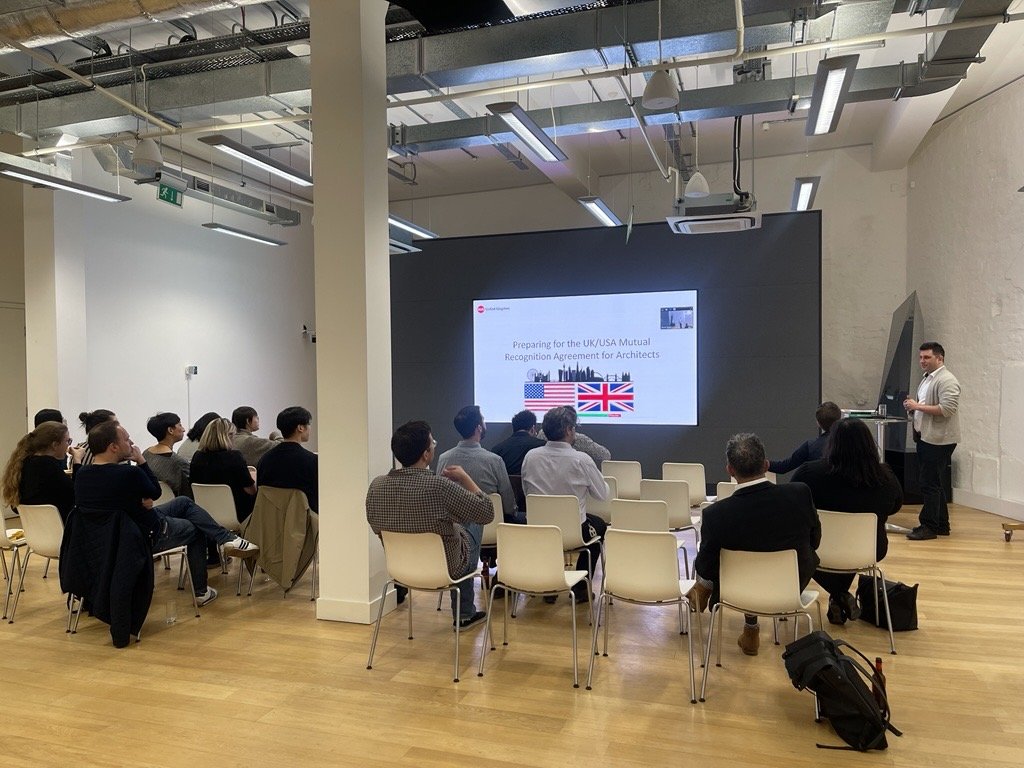My MRA Experience: Etain Fitzpatrick on Perseverance
Fiona Mckay
When I arrived in London, 20 years ago, the thought of becoming a qualified UK architect was the last thing on my mind. I had arrived onto an extremely busy project and was only meant to be here for six months and anyway I was already a registered architect in the state of New York.
However, fast forward seven years later, I was still in London and had decided that, as Lord Kitchener sang in the calypso classic, ‘London is the place for me’! I wanted to remain long-term and not being able to call myself an ‘architect’ in the UK while I was designing and delivering significant projects in London was frustrating, to say the least.
In 2014, I tried to get my Part 1 through the ARB Prescribed Examination process and for various reasons, ultimately, I failed. I was devastated, not only was it a humiliating experience, it was also very expensive! However, that didn’t deter me, I decided to get my Part 3 qualification. The course would help me with some of the evidence required for the prescribed examination and was ultimately required to obtain my UK qualification. I signed up for a Part 3 course at London Metropolitan University and I received my Postgraduate Certificate - Professional Practice in Architecture with Merit in 2015. Success!
Now back to the Part 1 prescribed examination….In 2017 I decided to take ‘Preparing for the ARB Prescribed Examination’, a short course at the University of Westminster. Yes, the prescribed examination is so complicated that there are courses to explain it. After the course, well, I procrastinated. I could never find the motivation to start the process for the Part 1 prescribed examination again.
In 2023, there was a glimmer of hope. The only good thing to come out of Brexit, a Mutual Recognition Agreement (MRA) between the UK and US architects was announced, at last! Hosted at the RIBA, leaders from RIBA, ARB and NCARB held a presentation followed by question and answers about the new agreement. I was buoyed! However, they were talking about requiring a UK Adaptation Assessment and I had my Part 3 qualification. I asked if I could use that in lieu of the assessment, but that ARB didn’t have an answer at that time. I followed up with the ARB by email afterwards and they said they were to discuss it at their next Board Meeting. I followed up again a few months later and the ARB confirmed that I could use my Part 3 qualifications in lieu of doing the UK Adaptation Assessment. I was one step closer….
However, another issue came up, New York State, where I am registered, was not participating in the MRA. Apparently, they were concerned about getting a surge of UK architects to NYC. Therefore, I needed to become licensed in a participating State. I reinstated my NCARB certification, became a licensed architect in the State of Pennsylvania (which included getting a set of fingerprints done for an FBI background check) then I used that license to apply for qualification at the ARB. The ARB then sent me a link to start my UK Adaptation Assessment, however, I informed them that I had my Part 3 qualification, which was fine, except, because I had received it over two years ago, I needed to submit my job description, a letter stating why I wanted to join the ARB register and list of two years of CPD. I submitted all the above and then in February 2025 I finally received my ARB registration certificate. After 20 years of working in the UK. I could finally call myself an Architect.
I need to run now, the first year of my ARB registration is due for renewal and I need to record my CPD. Cheerio!
Etain Fitzpatrick AIA NCARB RIBA ARB, a Director at JRA and is based at their headquarters in Southwark, London.
Written by Etain Fitzpatrick, AIA NCARB RIBA ARB



















